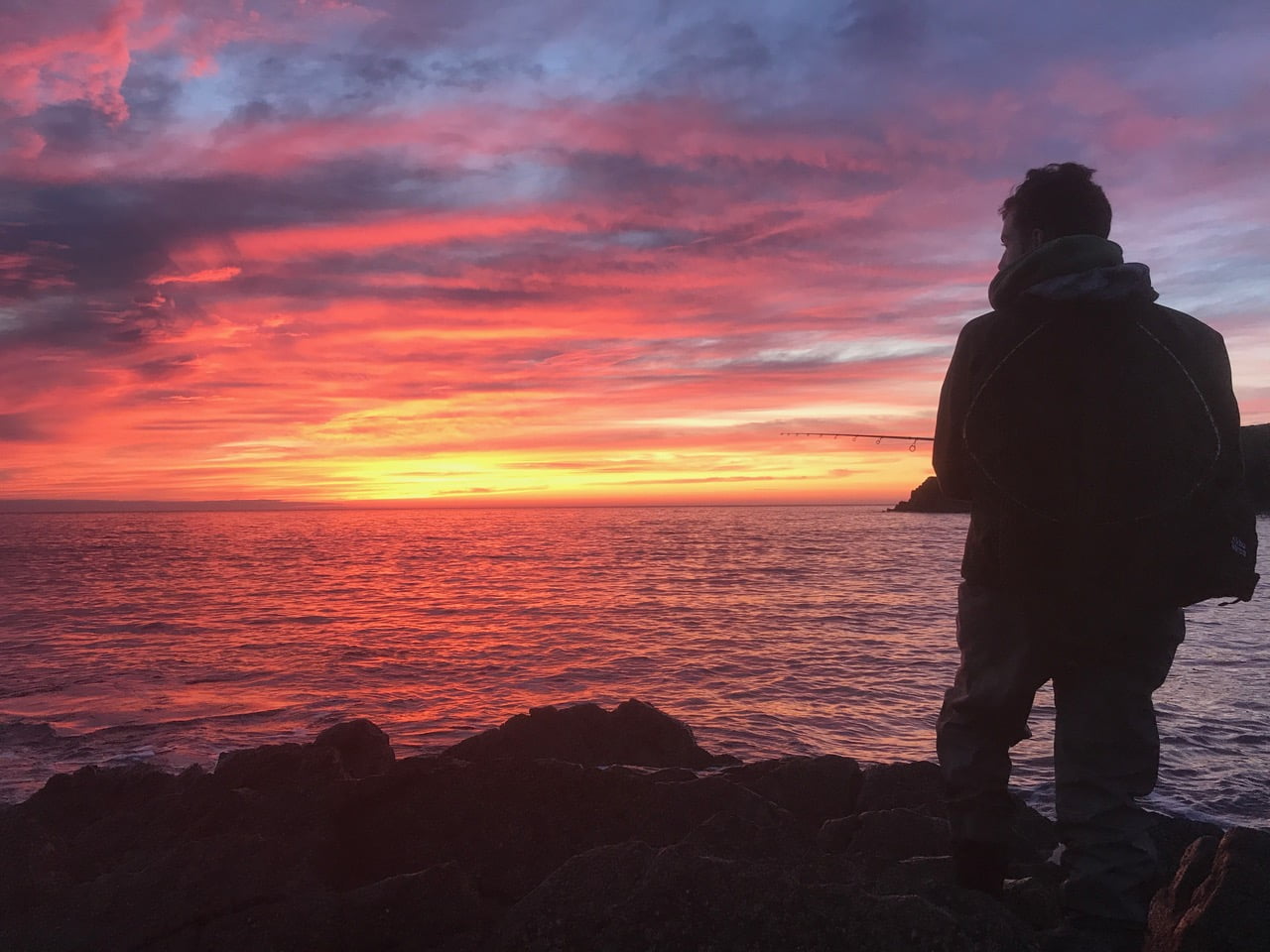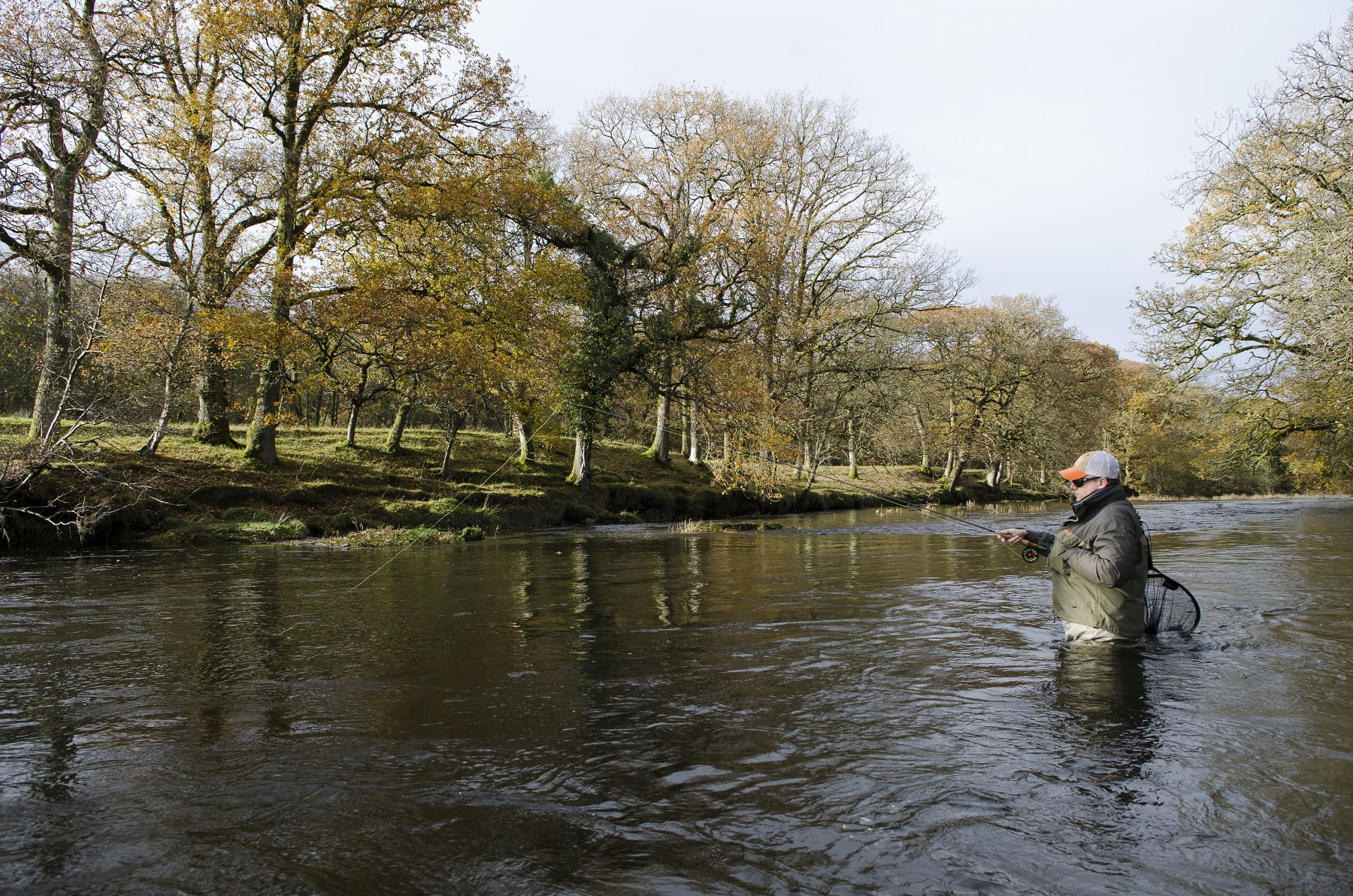Welsh Ray Fishing – Five Species To Fish For!
Angling writer Dave Lewis reports on the major types of ray to be found off Welsh shores, profiling each species, with recommend baits and distribution around our coastline.
The various species of ray caught in the coastal waters throughout Wales are hugely popular with sea anglers. With the exception of the stingray, none are fast running when hooked but all are strong, dogged fighters, guaranteed to put a healthy bend in your rod and a smile on your face. In terms of culinary value yes, you can eat the wings off several species, but having tried them I can only say that given a choice I’d sooner take my chances with a burger from a fast food outlet! Which is good as it means that almost all rays anglers catch are released, thus ensuring the continuity of this amazing and hugely productive recreational fishery.
I have generalised the areas where each of the five species found in Welsh waters are caught. In order to obtain more detailed information such as marks and the optimum size and stages of tide to fish, contacting local tackle shops is always the most reliable way to proceed. The tackle shop will also be able to advise on precise marks to try, and perhaps most importantly exactly when to fish them. Of course a tackle shop will also supply the most effective rigs to use, along with the very best fresh and frozen baits.
THORNBACK RAY
The thornback ray is the commonest of the five species of ray caught in Wales. They also have the widest distribution, and are found all around the coast from the Dee Estuary in the north to the mouth of the River Wye in the south east. The body is kite-shaped with a long, thorny tail, the with the fish’s back liberally covered in numerous thorny spines, as is the underside in older females. Colour varies widely depending on location but typically ranges from light brown to grey, with darker blotches and numerous small darker spots and yellow patches.
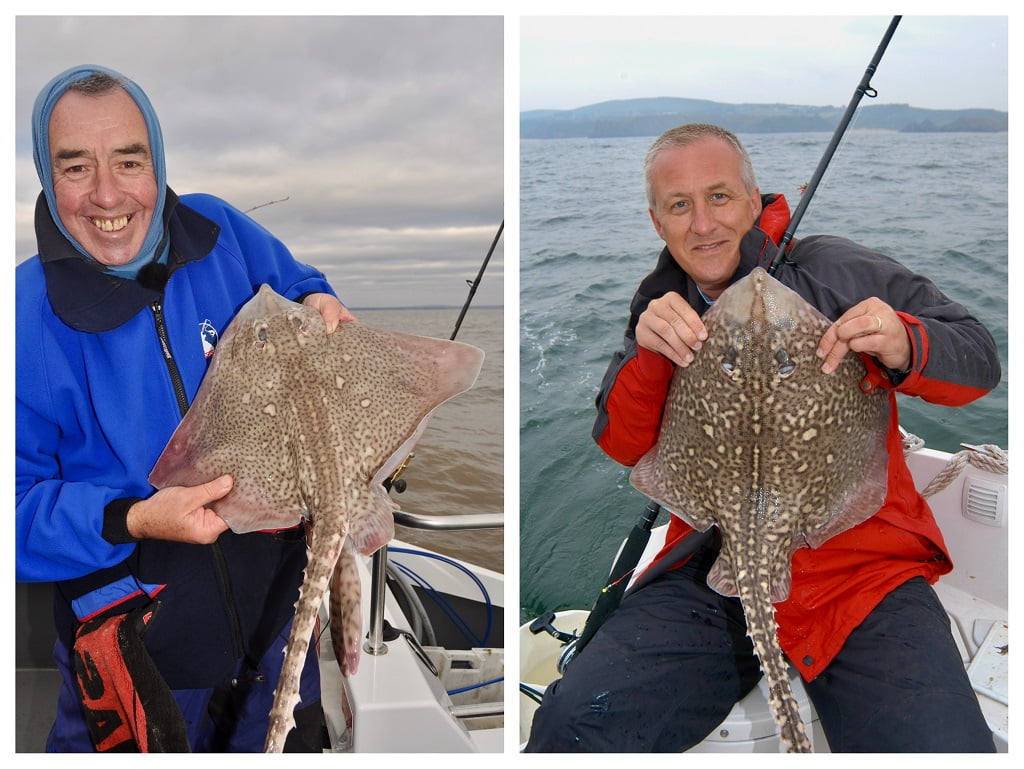
The thornback ray is a popular target species with both boat and shore anglers, not least because in many areas they are relatively easy to locate and catch. The average size of most Welsh thornback ray is between 6-12lb, they’re diet consisting of small crustaceans, bottom-living shrimps, crabs and small fish.
Traditionally thornback ray used to start to make an appearance during the early spring, with numbers of fish remaining abundant throughout the summer and autumn before they migrated offshore into deeper water with a more stable temperature for the cold winter months. However a succession of mild winters have meant that in many areas thornback ray now remain inshore throughout the entire winter, and can be targeted pretty much year round.
The most productive areas for thornback ray include the Bristol Channel and Cardigan Bay, along with Anglesey and a few areas off the north coast. They can be caught over a wide range of different types of seabed but appear to be most consistent in areas where the bottom consists of a mix of mud and sand along with patches of rougher ground, and especially in coloured water typically found within the vicinity of estuaries. The species is especially common throughout the lower reaches of estuaries, and is often found in numbers over sand, mud and shingle banks, and especially areas that invariably are subjected to a fast run of tide.
Thornback ray can and often are caught on pretty much any type of bait, frequently when targeting other species. The most effective baits are invariably fish based and include a long, thin, fillet or chunk of mackerel or herring, sandeel’s, launce and pretty much any other type of fish. All types of shellfish are effective, especially razorfish, clams and mussel. Over rougher ground peeler crab is another very effective bait. Squid and cuttlefish will both catch plenty of thornbacks as will worm baits, especially king ragworm.
SMALL-EYED-RAY
The small-eyed-ray is commonly found in very shallow water, and is another very popular species with sea anglers. Small-eyed-ray are relatively easy to identify. Their back is generally a light sandy brown, liberally covered in a random pattern of white wavy lines, with sharp spines extending along the length of their back and tail. As the name suggests they have relatively small eyes. Small-eyed ray fight reasonably well as more often than not they are caught in very shallow water, providing great sport on light to medium tackle.
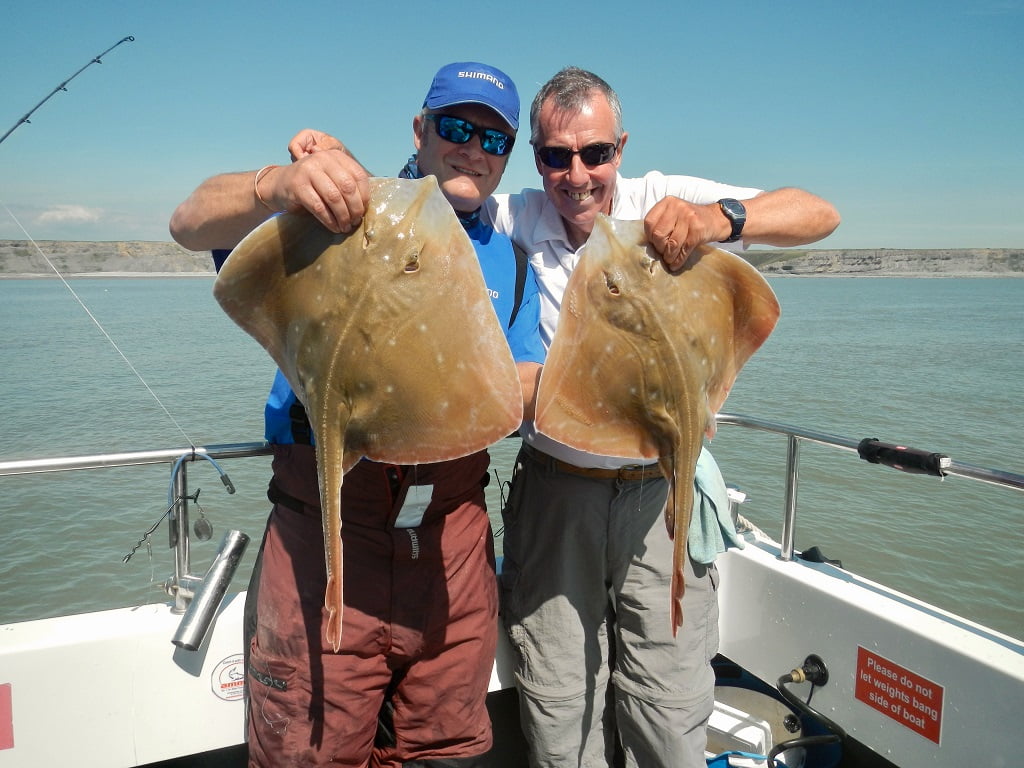
Small eyed ray are almost always found over open sandy ground on or in the very near vicinity of sand banks, and especially in those areas with a seabed consisting of sand or gravel. Fishing in the Bristol Channel I have caught them casting into just a couple of feet of water, as a flooding tide covers an offshore sandbank that has previously dried out over low water. Open sandy beaches and rock platforms giving way to sand within casting range are productive shore marks.
Small-eyed-ray are found almost exclusively in the south and west of the UK, and south west Wales is one of their strongholds. They are common throughout the Bristol Channel from Milford Haven to Cardiff, and are also caught off the coast of West Wales. In some areas small-eyed ray can be caught throughout the year if fishing offshore, but from the shore most are caught from spring through until the autumn.
Sandeel’s are without question the number one choice of bait for small-eyed-ray. Over the years I have consistently found that good quality blast frozen eels are more effective for this species than either live of freshly killed eel’s. Long thin strips of mackerel and other fish baits or squid can also be effective.
BLONDE RAY
Aside from skate and stingray, blonde ray are the largest species of ray caught in British waters. They have an average size in excess of 10lb, double figure fish are common, and each year specimens weighing over 20lb are caught in Wales. Blonde ray are a very strong, hard fighting species, and an increasingly popular target for with many sea anglers as a result of their seemingly ever increasing numbers and range of distribution. Blonde ray are caught in Wales from early spring and throughout the summer months, with the period September to November being the absolute peak when huge numbers are caught by both boat and shore anglers.
Juvenile blood ray are often falsely identifies as being large spotted ray, but the spots on the wings of a blonde ray extend to the very edges of the wing tips, unlike a spotted ray that has more defined spots and a mostly clear, spotless margin along the edges of the wings.

Blonde ray are found over a sandy or mixed ground type seabed. At most places within their range around the UK the majority of blonde ray are caught over sandbanks, usually in deep water swept by a strong run of tide. Off the Welsh coast in The Bristol Channel they are regularly found over more open and shallow ground. Certainly The Bristol Channel is one of, if not the most productive, current hot spots for the species anywhere in the UK. This is surprising as up until the start of the new millennium blonde ray were rarely caught anywhere in Wales yet today charter boats fishing west of Cardiff Bay at marks along the coast as far as Swansea regularly catch dozens of blondes a trip, and even shore anglers fishing along this stretch of coastline catch a lot of big fish. West of Swansea blonde ray are caught in deeper water. There are productive grounds off the coast of South Pembrokeshire, but blondes are rarely if ever caught from the shore here.
Like most species of ray, blondes are opportunist feeders. If you are setting out to specifically target a blonde ray then large fish based baits will give you your best chance of success. A decent sized fillet of fresh mackerel or pretty much any other type of fish makes a great bait, as do sandeel’s, especially launce. Squid and cuttlefish are also very effective. A cocktail consisting of a couple of sandeel wrapped in squid is my go to bait for blonde ray.
SPOTTED RAY
The spotted ray is one of the smallest members of the ray family, only the very rarely seen cuckoo ray, which have been recorded in Welsh waters, are smaller. The body of a spotted ray is kite-shaped and is covered in numerous distinct spots, which unlike the blonde ray do not extend all of the way to the edge of the wings.
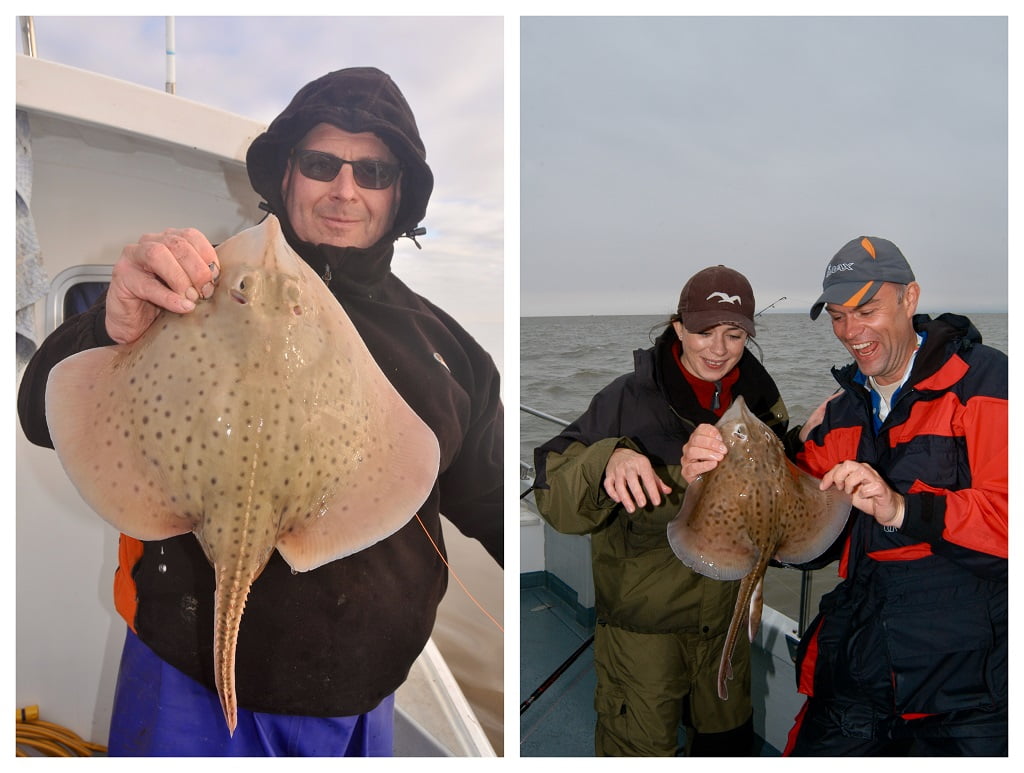
The average size of spotted ray caught by anglers is between 3-5lb; fish in excess of 5lb should be regarded as being specimens.
In Wales spotted ray typically start to make an appearance during the early spring, with numbers of fish remaining abundant throughout the summer and autumn months.
The most productive areas for spotted ray in Wales include The Bristol Channel, with the coastline between Sully Island and Porthcawl being especially productive. Spotted ray are occasionally caught in Cardigan Bay and at marks around North Wales including Anglesey. They can be found over a wide range of different types of seabed but are most frequently in areas where the bottom consists of hard ground, or a mix of sand or gravel in close proximity to patches of rougher ground. They can be caught in water ranging from just a few feet deep to well over 100ft and are commonly caught by both boat and shore anglers.
Spotted ray will take a variety of different baits, with those that are fish such as herring, mackerel, sandeel’s, launce and pretty much any other type of fish being effective. Shellfish, especially razorfish, clams and mussel, will also tempt fish as will peeler crab, squid and cuttlefish.
STINGRAY
The common stingray is distributed in tropical and sub-tropical seas ranging from North Africa and the Mediterranean north into UK waters. The colouration of a stingray consists of a uniform olive green on top, with a creamy white underside. The fish’s tail is about one and a half times the body length, and contains a large, serrated venomous stinger. Thankfully stingray are unlikely to be confused with any other species, even if you have never actually seen one before.
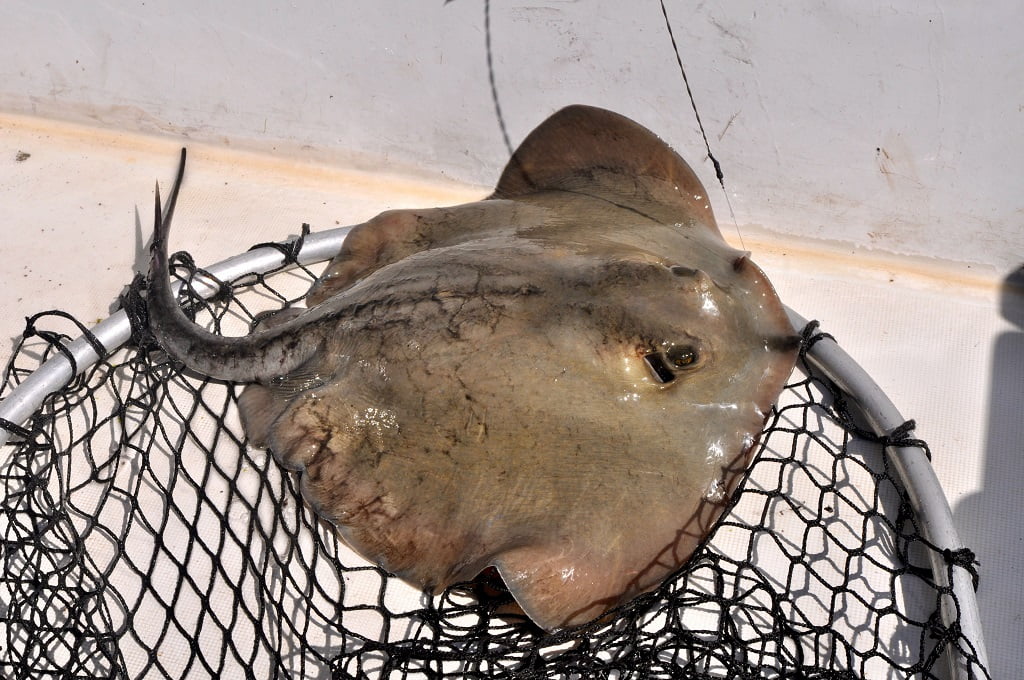
As the names suggests this species of ray is potentially hazardous. When the skin is pierced by a stingray’s stinger the venom quickly causes the wound to become inflamed, with symptoms including intense pain, severe headaches, nausea and dizziness. The pain is intense, especially for the first hour, and can persist for several days. The venom of a stingray is protein-based and as thus is destroyed by heat, so placing the effected part into hot water to ease the pain will help minimise the impact of the venom. If stung you should seek medical advice as soon as possible. Clearly stingray need to be handled with extreme care, ideally avoid bringing them aboard the boat, and be especially careful if landing one from the beach as their tail can rapidly whip around and sting you in the leg. If you do land one lay it flat on the deck or beach and cover the tail with a wet towel to avoid it lashing about.
In those areas where they are found most stingray are caught during the spring and summer months during prolonged extended periods of hot and settled weather. This is certainly the case here in Wales where each year stingray are caught from the Bristol Channel and Cardigan Bay, others being hooked and lost. The average size is between 10-40lb+ but the largest stingray recorded in Wales weighed 68lb 4oz, caught off Aberdovey. Unlike the previous four species of ray stingray run hard and fast, very fast. Many of those reports we hear each year of big fish being hooked and lost following a long unstoppable run are, I am sure, often a result of stingray.
Stingray favour generally flat, broken ground with a seabed consisting of sand or mud. They are often caught in coloured water, often in the vicinity of or within our larger tidal estuaries. Top baits for stingray include ragworm and peeler crab, but specimens are often caught on other baits including cuts from various species of fish, squid, cuttle and shellfish. The hotspot for anyone looking to catch a stingray in Wales would be to fish between Barry and Porthcawl, notably the Aberthaw area where most reported fish are caught. Along with similar areas throughout Cardigan Bay but an occasional specimen can and often does, turn up almost anywhere within Wales
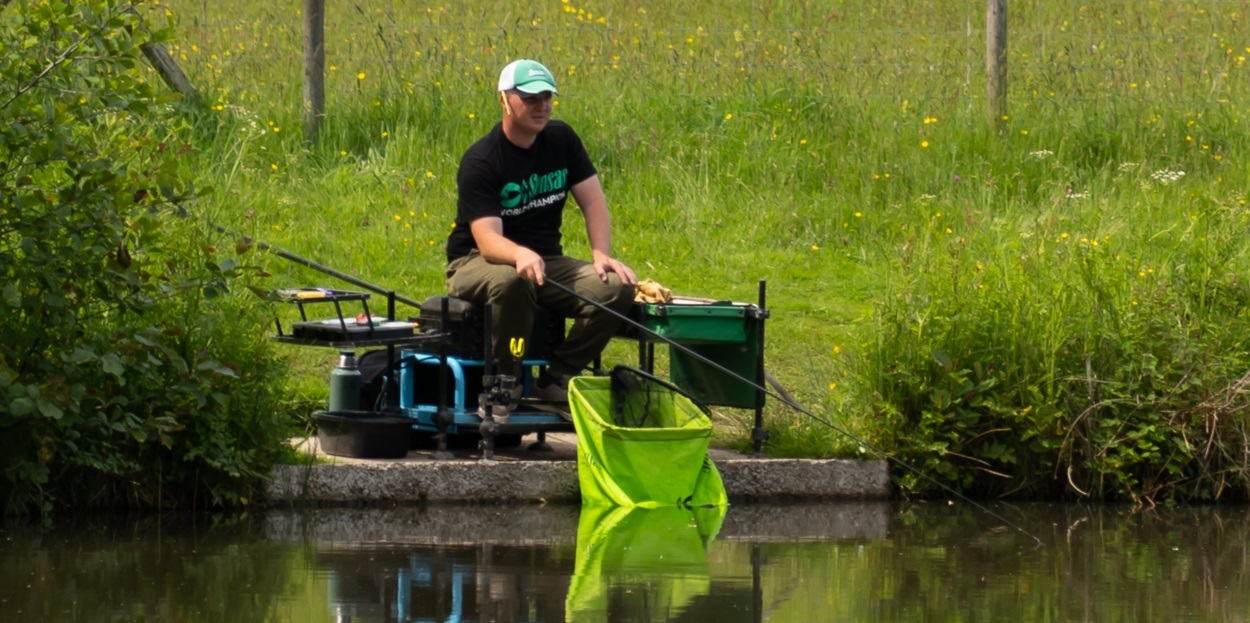
Cast a line and get back to your happy place
As we near National Fishing Month in August, Natural Resources Wales (NRW) invites everyone to experience the joy and…
Read More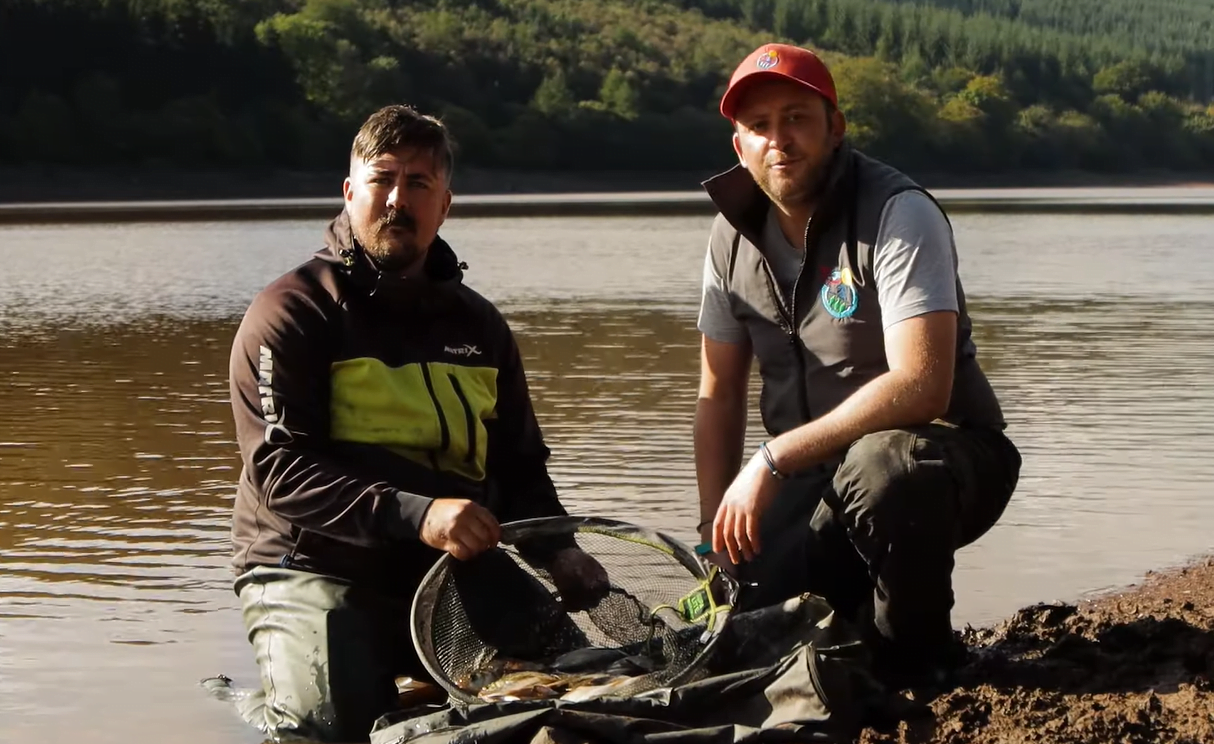
Take A Friend Fishing is Back
‘Take a Friend Fishing’ is on from 27th July to 1st September 2024 for National Fishing Month! Get together with…
Read More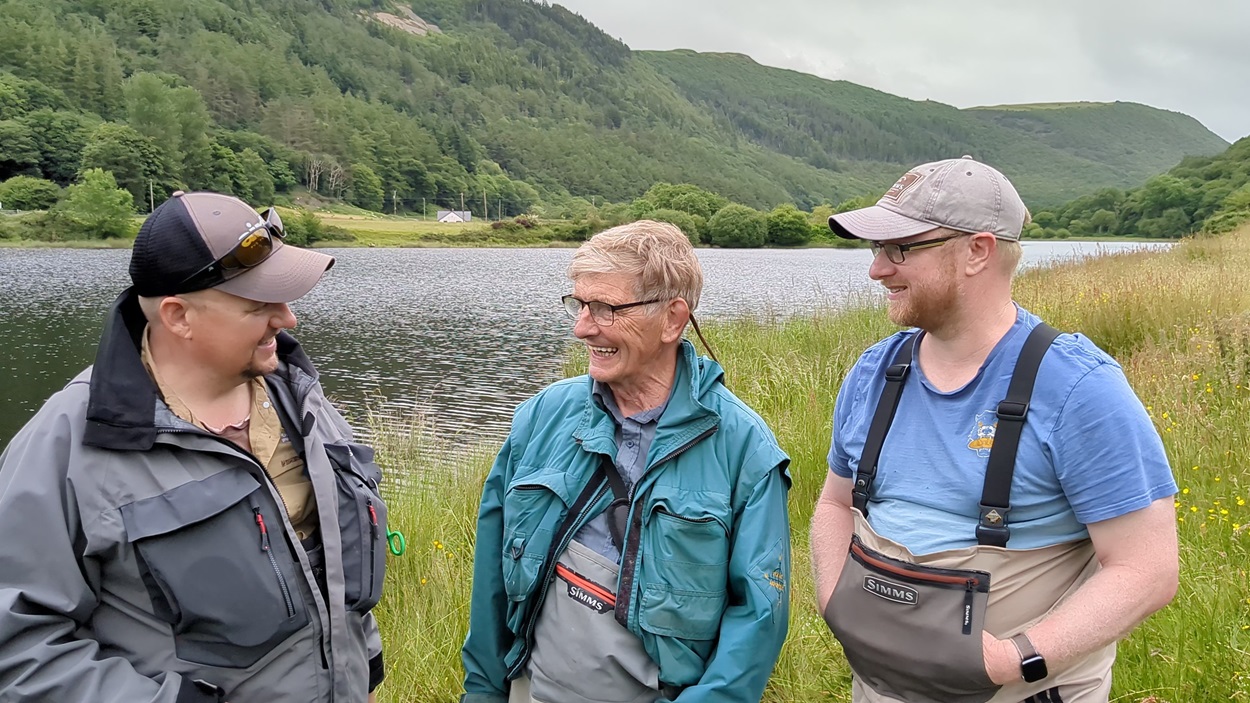
10 Lake Challenge VIDEO - Aberystwyth Angling Association
In this ‘summer special’ video Alan ‘Parf’ Parfitt, Ceri Thomas and Mark Evans take on the ’10 Lake Challenge’ which…
Read More

